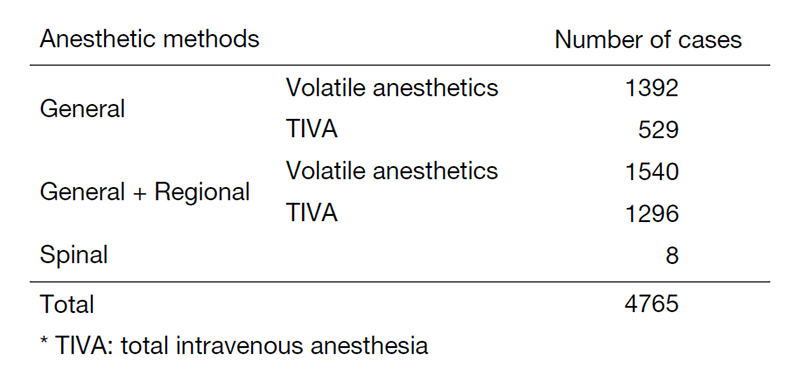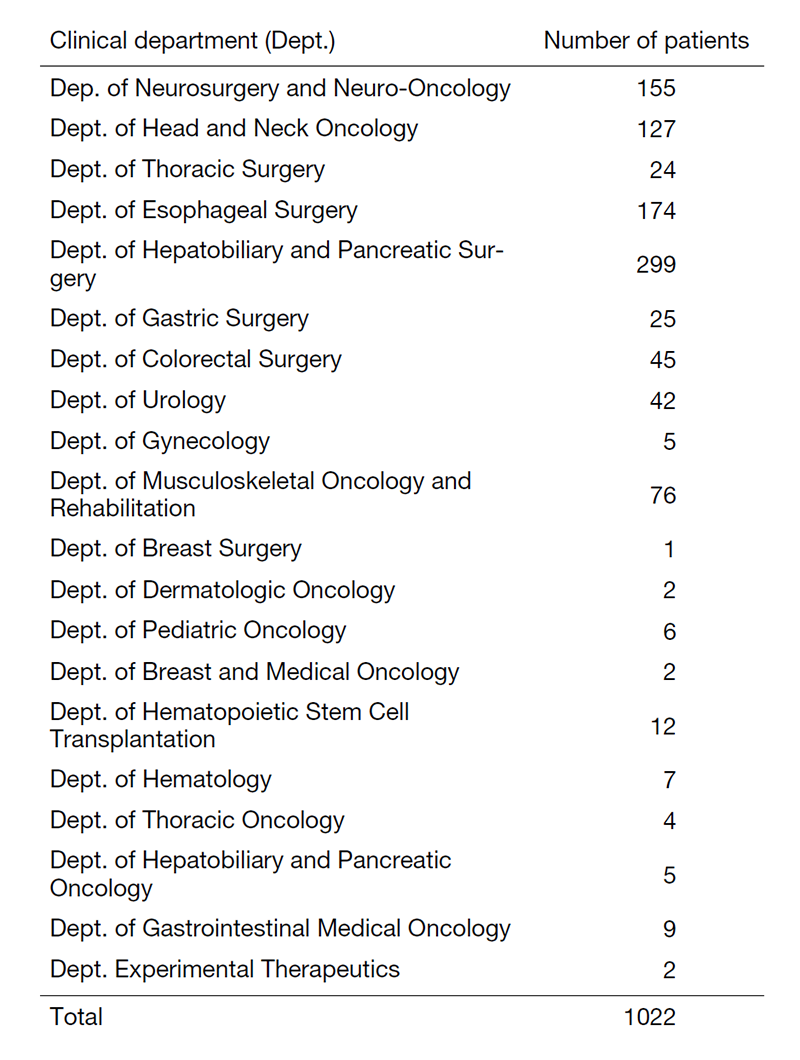Annual Report 2020
Department of Anesthesia and Intensive Care
Tetsufumi Sato, Junya Matsumi, Rie Suzuki, Yousuke Kawaguchi, Yuuri Oishi, Yukiko Hikasa, Misako Shigematsu, Yutaro Asagoe, Yuki Enomoto, Yusuke Mizobuchi, Hiroaki Takahashi, Yumi Saito, Junko Tsukamoto, Akihide Shibata, Kaoru Kato, Hiroaki Owada, Risa Oikawa, Akiko Ogaku, Nobuko Yokokawa
Introduction
The Department of Anesthesia and Intensive Care provides anesthesia and intensive care. Over 4,700 cases a year needing anesthetic services are dealt with at 15 main operation rooms, one MRI operation room and one radioisotope operation room. Over 1,000 intensive care cases a year are dealt with in an intensive care unit with eight beds. Our intensivists are also responsible for advising on the management of critically ill patients in wards and about resuscitation.
The Team and What We Do
Our department is comprised of 19 staff anesthesiologists, of which 12 are certificated. We provide perioperative care to all patients who require general anesthesia. Our operating section performs approximately 5,000 anesthetic procedures a year, including general anesthesia with/without regional anesthesia, spinal anesthesia, epidural anesthesia, and monitored anesthetic care (Table 1). In addition, scheduled surgery patients are seen by the perioperative management center, including the Anesthesia Consulting Clinic.
Our intensive care unit is certificated by the Japanese Society of Intensive Care Medicine. It is managed as a closed system by some of our staff, which includes five certificated intensivists. Over 1,000 intensive care cases a year are dealt with in a ward with eight beds. Patients are treated in intensive care units mainly for post-surgical indications, some of which are medical emergencies (Table 2).
Table 1: Number of anesthesia cases classified by anesthetic methods 

Table 2: Number of patients managed at intensive care unit, classified by clinical department

Some members of our department are actively involved in research at clinical levels and fundamental research.
Research activities
One of our members performs fundamental research about opioids. To understand the risk factors and effects on prognosis of severe adverse events in postoperative patients and critically ill cancer patients, epidemiological analyses were mainly performed. Studies are also being conducted to improve current care for perioperative and critically ill cancer patients.
Clinical trials
We conducted a prospective, randomized control study about the difference between anesthetic agents on liver damages after metastatic liver tumor resection.
Education
As for clinical training for non-certified anesthesiologists, their anesthetic management is supervised by certificated anesthesiologists. Clinical training of non-certified intensivists is supervised by certified intensivists. We also organize academic conference presentations and scientific papers. This training is not only for clinical experiments but is also to meet the requirements for becoming certificated specialists.
Future Prospects
We continually aim to achieve more effective perioperative procedures including anesthesia and critical care for cancer patients. We will also continually improve perioperative management, for example, by employing multi-departments and multidisciplinary members for patients’ safety.
